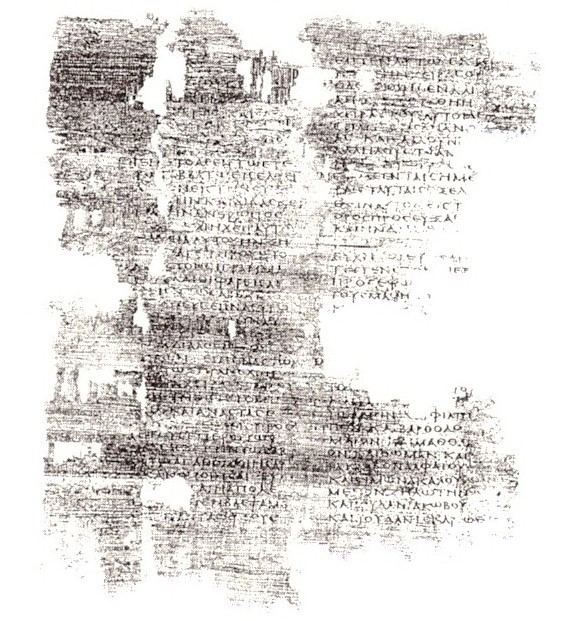Order in the Bible part 3 | ||
 | ||
Luke 8 is the eighth chapter of the Gospel of Luke in the New Testament of the Christian Bible. It tells the records of some great miracles performed by Jesus, as well as several parables told by Him. The book containing this chapter is anonymous but early Christian tradition uniformly affirmed that Luke composed this Gospel as well as Acts.
Contents
Text
Structure
This chapter can be grouped (with cross references to other parts of the Bible):
The Women who sustained Jesus
Mary called Magdalene, Joanna, wife of Chuza, and Susanna are named as women who provided material sustenance to Jesus during his travels, along with other unnamed women.
Parable of the Sower
In this story, a sower dropped seed on the path, on rocky ground and among thorns, and the seed was lost; but when seed fell on good earth it grew, yielding thirty, sixty, and a hundredfold.
The Storm Calmed
Jesus and his disciples were crossing the Sea of Galilee one evening in a boat when a furious storm came up, with the waves breaking over the boat, so that it was nearly swamped. Jesus was in the stern, sleeping on a cushion, but the disciples woke him and said to him, "Teacher, don't you care if we drown?" Jesus got up, rebuked the wind and said to the waves, "Quiet! Be still!" Then the wind died down and it was completely calm. This account is also recorded in the Gospel of Matthew and Gospel of Mark.
The Gerasene Demoniac
The miracle took place when Jesus went across the lake to the land of the Gerasenes (or Gadarenes), the modern Jerash in Jordan. There a man possessed by an evil spirit came from the caves to meet him. No one could bind this man anymore, not even with a chain, for no one was strong enough to subdue him. Night and day among the tombs and in the hills he would cry out and cut himself with stones. When he saw Jesus from a distance, he ran and fell on his knees in front of him. He shouted at the top of his voice, "What do you want with me, Jesus, Son of the Most High God? In God's name don't torture me!" For Jesus had said to him, "Come out of this man, you evil spirit!"
Then Jesus asked him, "What is your name?" "My name is Legion," he replied, "for we are many." And he begged Jesus again and again not to send them out of the area.A large herd of pigs was feeding on the nearby hillside. The demons begged Jesus, "Send us among the pigs; allow us to go into them." He gave them permission, and the evil spirits came out and went into the pigs. The herd rushed down the steep bank into the lake and were drowned.
Raising of Jairus' Daughter and Healing of the Bleeding Woman
The story immediately follows the exorcism at Gerasa. Back in Galilee, Jairus, a patron or ruler of a Galilee synagogue, had asked Jesus to heal his 12-year-old daughter, who was dying (in Matthew's account, Jairus used hyperbolic expressions in his anxiety: ‘My daughter is even now dead’). As they were travelling to Jairus' house, a sick woman in the crowd touched the border (or possibly the fringe) of Jesus' cloak and was healed of her sickness. Jairus' daughter was then reported as having died, and Jairus was therefore advised not to trouble Jesus, 'the teacher', any further. Jesus, however, continued to the house, stating that the girl was not dead but asleep, and restored her to health. The chapter ends with Jesus' mandate that Jairus and his wife should tell no-one what had happened.
Tzitzit
Luke's (and Matthew's) accounts specify that the bleeding woman touched the "fringe" of his cloak, using a Greek word kraspedon which also appears in Mark 6. According to the Catholic Encyclopedia article on fringes in scripture, the Pharisees (one of the sects of Second Temple Judaism) who were the progenitors of modern Rabbinic Judaism, were in the habit of wearing extra-long fringes or tassels (Matthew 23:5), a reference to the formative çîçîth (tzitzit). Because of the Pharisees' authority, people regarded the fringe with a mystical quality.
